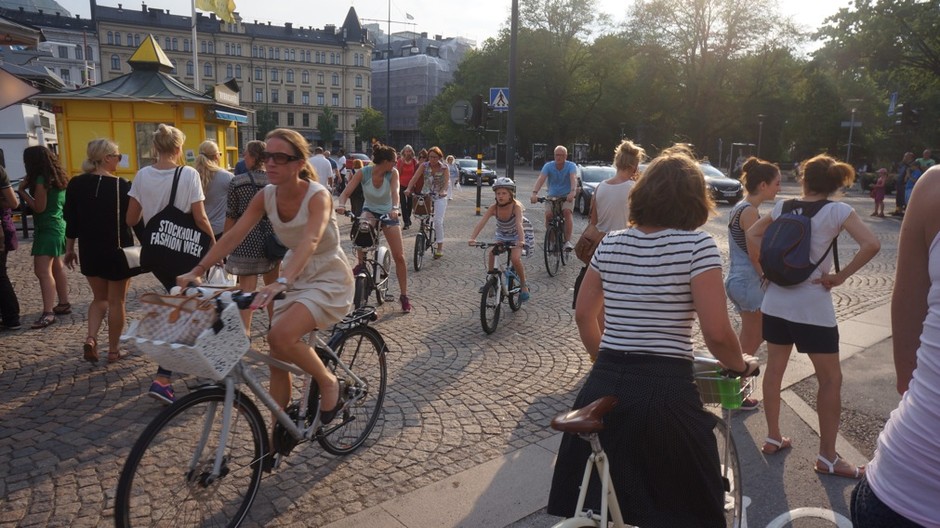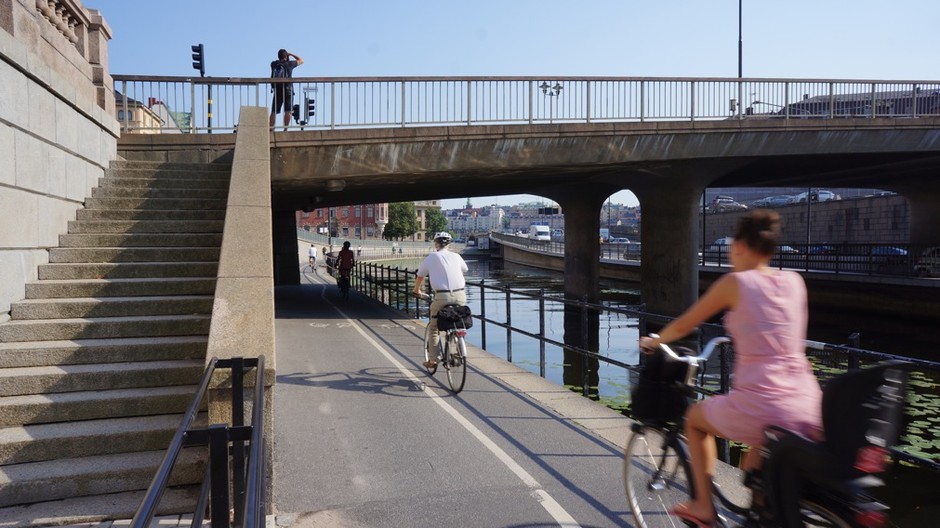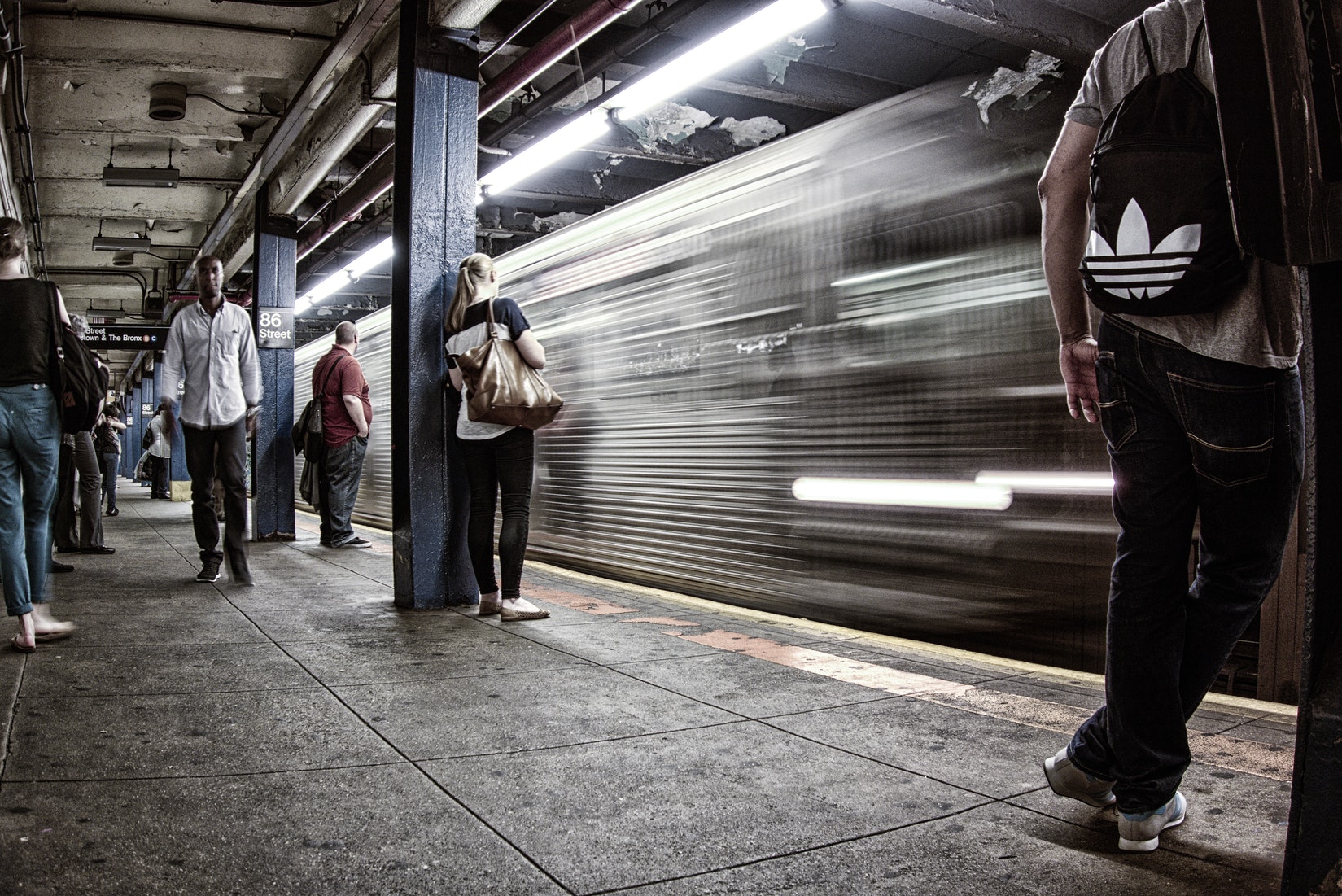The quality of life in many neighbourhoods in the Swedish capital is directly influenced by a decision to almost entirely eliminate cars.
The concept of “Vision Zero,” imported to the United States from Sweden, has been showing up in more and more American cities, from New York to Seattle. In its most basic form, the policy is this: to adopt, as an official goal, the reduction of traffic deaths and serious fatalities to zero through a combination of engineering, education, and enforcement.
In the U.S., Vision Zero campaigns have so far emphasised what happens on city streets. But what many Vision Zero proponents in North America might be surprised to learn is that in the Swedish capital of Stockholm, the policy is not a major factor when it comes to urban planning. Rather, Vision Zero has for the last 20 years focused on cars and drivers, making their trips safer on major roads and in non-urban areas, in large part through design.
That is changing, according to some of the people interviewed in a new short from Streetfilms about the culture of Stockholm’s streets (which is already remarkably vibrant and relaxed—seeing people sharing an impromptu meal on a folding table in the street is apparently not uncommon).
From our partners:
The international dialogue between Stockholm and cities such as New York, with their emphasis on urban pedestrian protection, is part of the shift. “This summer we are going to be having a conference where we reinvent Vision Zero and call it Vision Zero 2.0,” says Lars Strömgren, a cycling advocate. “The difference is that before you only tried to make it possible to keep on driving and keep on using your car, and just try to minimize the deaths and injuries in traffic. Now we want to involve the health benefits of more people using their bikes and more people walking.”
Stockholm is already focusing on walkability, even if not under the Vision Zero rubric. Its city plan, in fact, is called “The Walkable City.” The Swedish capital was one of the first places in the world to implement congestion pricing, and while that was opposed by 70 percent of citizens before it was implemented in 2006, now the same percentage support the policy, which charges drivers a toll for entering the central part of the city.
Stockholm, with its extensive medieval core, also has many streets where cars are prohibited altogether. Some of those closures, too, were vehemently opposed when implemented 10 or so years ago, but are now widely supported.
One of the reasons walkability is now so popular in Stockholm is that it has proven to be economically very beneficial. The planning consultancy Spacescape has explored this link in its research. “Our study of the housing and office market in Stockholm showed that walkability basically explained the difference in prices and rents,” writes Spacescape’s Alexander Ståhle in an email. “We pinpointed the specific monetary value of walking distance to shops, restaurants, culture, transit stops, street connectivity, parks and waterfronts. Surprisingly, car accessibility did not have a significant effect on apartment prices or office rents. Stockholm is one of Europe’s fastest growing cities, and its property market is driven by walkability. It is very hard to say you do not care about the market. The economic argument tends to win in urban development.”
The quality of life in many Stockholm neighbourhoods—and their desirability—is directly affected by the decision to almost entirely eliminate cars. “It’s very good to live here with kids, because you can just let the kids out to play in the streets,” says Linda Kummel of Spacescape. “You don’t have to worry at all about kids getting hit by cars.”
As the Vision Zero conversation widens, a new dimension is emerging to the approach. Increasingly, planners and advocates are talking about creating cities rich in human interaction, cities that provide a healthier environment that puts people above cars in a variety of ways. These places are by definition less noisy, cleaner, and safer environments for people of all ages.
They are also, it turns out, often economically successful. ”If you are pro-growth, Stockholm shows how walkability and urban design can drive the market,” writes Ståhle. “The environmental and social benefits comes as a bonus.”
“I think the really interesting thing, and I’ve seen it with New York City, for example, is that while Vision Zero is about safety, we need something bigger,” says Claes Tingvall, director of traffic safety at the Swedish Road Administration and a major architect of the original Vision Zero policy. “We need to talk about the livable city.”
This article originally appeared in CityLab.
















